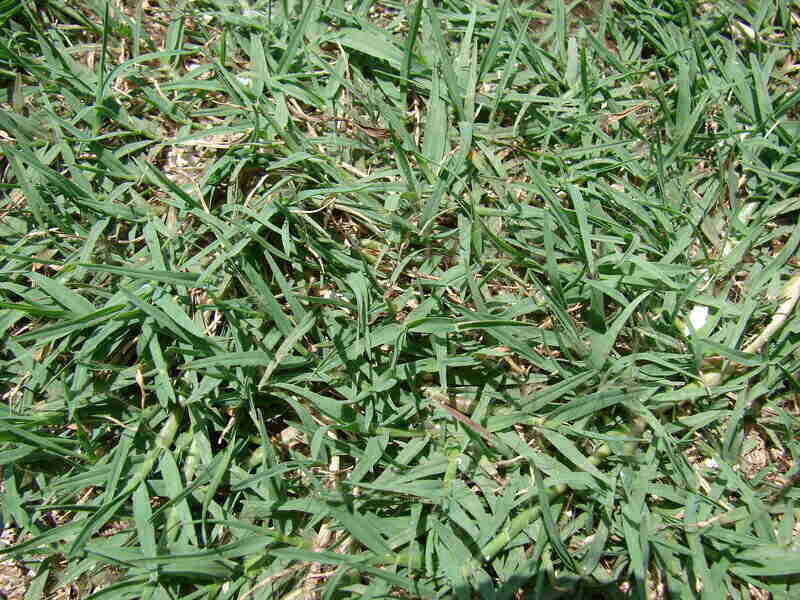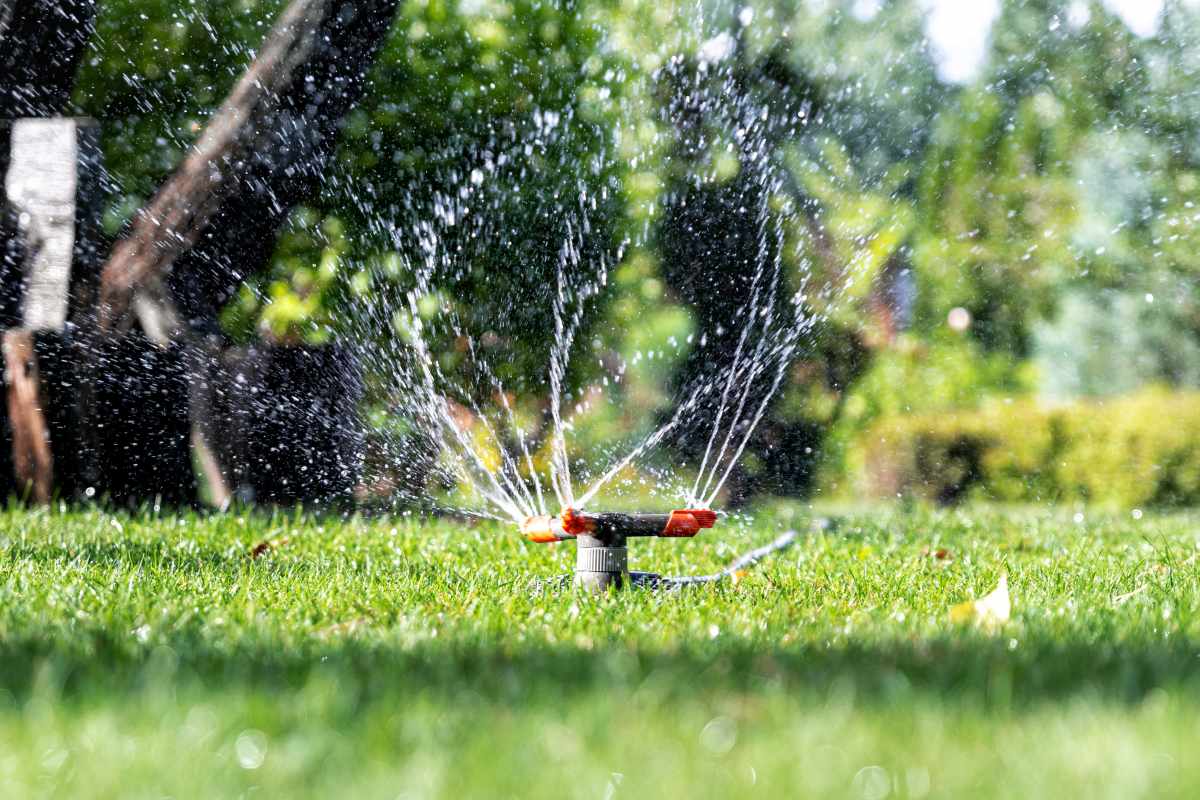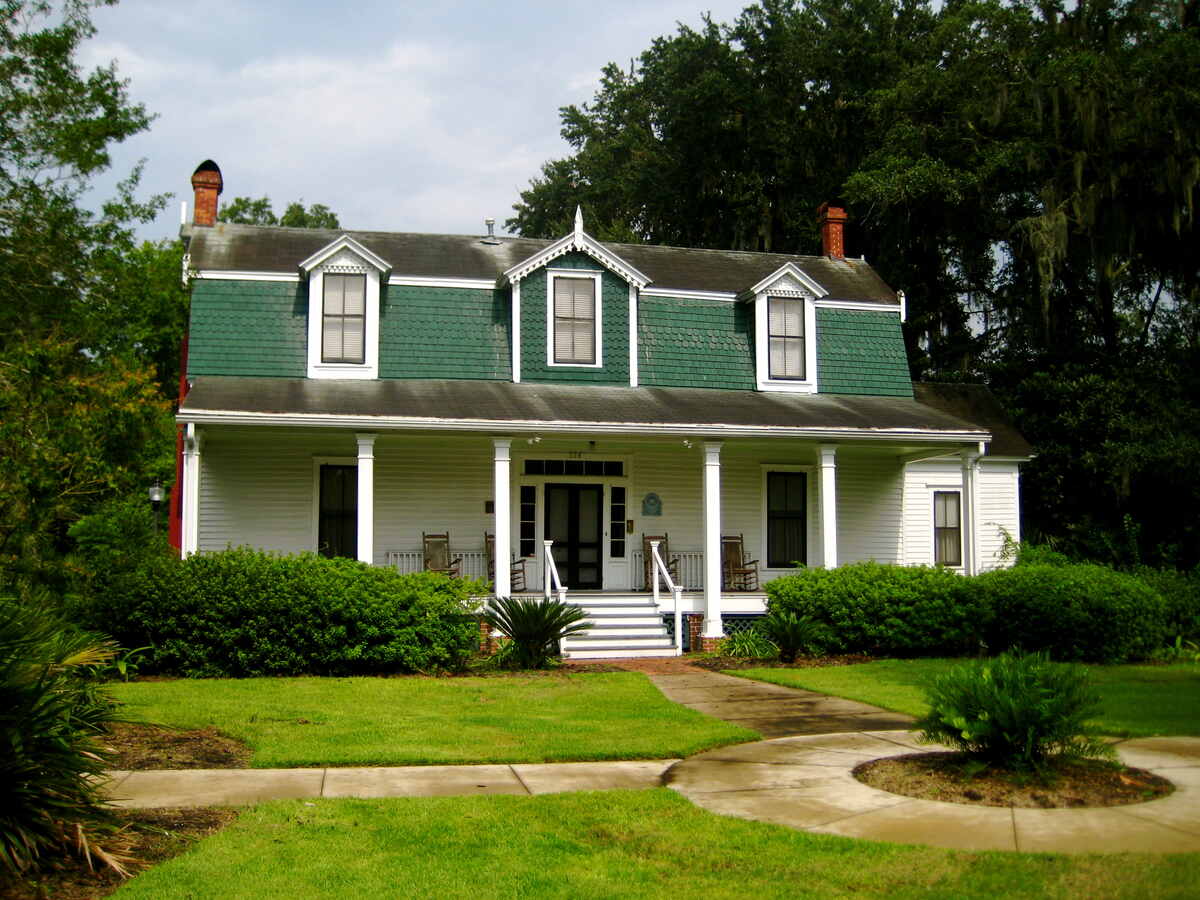
The best grass types for Panama City are all warm-season varieties – Bermudagrass, Zoysiagrass, St. Augustinegrass, bahiagrass, centipedegrass, and seashore paspalum. However, each has strengths and weaknesses that you should consider when choosing a turf grass.
Selecting the right grass will help you establish a lawn that not only looks good but also fits your maintenance preferences. There’s no point in selecting a dense but high-maintenance grass if you simply don’t have the time to take care of it (unless you call a pro).
Key Takeaways
Best Panama City grasses: Choose between Bermudagrass, Zoysiagrass, St. Augustinegrass, bahiagrass, centipedegrass, and seashore paspalum. Your choice may depend on your irrigation, shade, and maintenance preferences.
How to choose a grass: Some do better in shade, some require less water, and some withstand foot traffic. Pick one that suits your needs.
Seed, sod, or plugs? Seed is cheaper but requires more time and care to grow, while sod is expensive but creates an instant lawn.
Bermudagrass: The Heat-Tolerant and Traffic-Tolerant Grass

| Drought tolerance | High |
| Common mowing height | 0.5 to 1.5 inches |
| Shade tolerance | Low |
| Traffic tolerance | High |
| Disease resistance | Poor resistance to some diseases, but it depends on cultivar; even resistant cultivars are still prone to spring dead spot, but the disease will be less severe. |
| Weed resistance | High with occasional problems if the turf is weak. |
| Maintenance | Generally needs more maintenance than other grasses |
| Salt tolerance | High |
Ideal for Panama City’s high temperatures and drought, Bermudagrass is sold as seed, not sod or plugs. It spreads quickly, so it fights off wees pretty easily, but it may face some diseases. It’s not the best option for lawns with shade, either.
Learn more about it in our Bermudagrass guide.
Grass Seed Options:
– Pennington Bermudagrass Bare Spot (5 lb. bag)
– Pennington Smart Seed Bermudagrass Mix (8.75-lb. bag)
– Scotts Turf Builder Bermudagrass (10-lb. bag)
– Hancock Seed Co. Bermudagrass (50-lb. bag)
Zoysiagrass: The Easy-Care, Resilient Grass

| Drought tolerance | Moderate to high |
| Common mowing height | 0.5 to 1.5 inches |
| Shade tolerance | Tolerates light shade |
| Traffic tolerance | High |
| Disease resistance | High, but not to large patch disease; avoid Zenith cultivar for its low disease tolerance. |
| Weed resistance | High if grass is well-maintained; winter annuals may attack it when it’s dormant. |
| Maintenance | Low |
| Salt tolerance | Moderate to high |
Zoysiagrass also tolerates salt spray, and almost as well as Bermudagrass. This makes it another great match for Panama City. Some varieties of this grass can be planted as sod or plugs. It tolerates a bit of shade, and is unlikely to deal with many weeds or diseases. This is with the exception of the Zenith cultivar, which is unsuitable for Panama City.
For more information, check out our Zoysiagrass guide.
Grass Plug and Seed Options:
– Zoysia Plugs (50 Large Grass Plugs)
– Zoysia Plugs (50 Full & Lush Grass Plugs)
– Zoysia Plugs (100 Plugs)
– Zoysia Emerald Grass Seeds (1/8 lb. of seeds)
– Zenith Zenith Grass Seeds (1/8 lb. of seeds)
St. Augustinegrass: The Best Grass for Shade

| Drought tolerance | Moderate, may need supplemental irrigation. CitraBlue is more drought-tolerant than other cultivars. |
| Common mowing height | 2 to 4 inches |
| Shade tolerance | Better than other warm-season grasses, especially cultivars like Bitterblue, Seville, and others. |
| Traffic tolerance | Low |
| Disease resistance | Some cultivars are susceptible to diseases. |
| Weed resistance | Relatively high; CitraBlue is less susceptible than other cultivars. |
| Maintenance | Moderate |
| Salt tolerance | Moderate to high |
St. Augustinegrass works for most of Florida and is the most popular grass. It’s available as seed, sod, and plugs. The grass grows quickly, and loves heat. However, it may go brown during summer heat unless it gets supplemental irrigation. It also needs frequent mowing and may deal with chinch bugs.
For more information, read our guide on St. Augustinegrass.
Grass Plug Options:
– Seed Ranch St Augustine Seville Grass Plugs (2 Trays)
– Seed Ranch St Augustine Floratam Grass Plugs (2 Trays)
Bahiagrass: The Drought-Tolerant, Low-Maintenance Grass

| Drought tolerance | High |
| Common mowing height | 3 to 4 inches |
| Shade tolerance | Low |
| Traffic tolerance | Low |
| Disease resistance | Sometimes affected by dollar spot |
| Weed resistance | Low; the grass has low density, which may invite weeds |
| Maintenance | Low |
| Salt tolerance | Low |
Bahiagrass is a heat-resistant, low-maintenance grass that you can let grow quite tall. It is available as seed, sod, and plugs.
Bahiagrass’s downside is that it won’t grow into a thick carpet that a lot of homeowners like. Plus, weeds invade a sparse grass more easily than a dense one. This may become a nuisance despite bahia’s low-maintenance needs. Moreover, the grass doesn’t tolerate salt well and isn’t ideal for busy or shady lawns.
Grass Seed Options
Pensacola Bahiagrass:
– Scotts Turf Builder Pensacola Bahiagrass (5 lb. bag)
– Hancock Seed Co. Pensacola Bahiagrass Seed (5 lb. bag)
– SeedRanch Pensacola Bahiagrass Seed (10 lb. bag)
Argentine Bahiagrass:
– Scotts Turf Builder Argentine Bahiagrass (10 lb. bag)
– Hancock Seed Co. Argentine Bahiagrass Seed Mix (25 lb. bag)
Centipedegrass: The Low-Maintenance, Weed- and Disease-Resistant Grass

| Drought tolerance | Low to moderate |
| Common mowing height | 1.5 to 2 inches |
| Shade tolerance | Moderate; needs at least 6 hours of full sun per day |
| Traffic tolerance | Low |
| Disease resistance | High |
| Weed resistance | High |
| Maintenance | Low |
| Salt tolerance | Low |
Centipedegrass is perfect for homeowners who want to sit back and not worry about lawn care too much. While its optimal mowing height is between 1.5 and 2 inches, it’s not very demanding in general. It also resists diseases and weeds. You can plant this grass as seed, sod, or plugs.
However, centipedegrass doesn’t withstand drought as well as other grasses; it is a thirsty grass. It also doesn’t tolerate salt or foot traffic.
You can learn more about its pros, cons, and needs in our centipedegrass guide.
Grass Seed Options:
– Gulf Kist Coated Centipedegrass Seeds (1 lb.)
– Scotts EZ Seed Patch and Repair Centipedegrass (3.75 lbs.)
– TifBlair Centipedegrass (5-lb. bag)
– Pennington Centipedegrass and Mulch (5-lb. bag)
Seashore Paspalum: The Salt-Tolerant Grass

| Drought tolerance | High |
| Common mowing height | 1 to 2 inches |
| Shade tolerance | Low to moderate |
| Traffic tolerance | Moderate to high |
| Disease resistance | Low |
| Weed resistance | Low |
| Maintenance | Low |
| Salt tolerance | High |
Seashore paspalum, as the name suggests, is perfect for lawns near the salt water because of its extra-high salt tolerance. It’s available as seed, sod, or plugs.
Although the grass is vulnerable to stressors like weeds, diseases, and insects, it’s otherwise quite low-maintenance and deals well with foot traffic. Its shade tolerance is low but higher than that of Bermudagrass. The two grasses are similar in appearance.
Grass Seed and Sod Options:
– Seed Ranch SeaShore Paspalum Coated Grass Seed – 1 lb.
– Seed World SeaShore Paspalum Grass Seeds (various amounts)
– Other places to purchase seashore paspalum sod
How to Choose the Best Grass in Panama City
When choosing a grass for your Panama City lawn, there are a number of factors to consider because every warm-season grass has different strengths and weaknesses.
So before you select a grass type, you may want to consider:
- How much time do you have to irrigate? Some grasses require less water than others (see When to Water Your Lawn in Panama City).
- How often do you want to mow? Some grasses require more frequent mowing, and some require less.
- Is your lawn shady? Some species prefer full sun, and some do great in shade.
- Can you deal with lawn diseases? If not, pick one that is very disease-resistant.
- Do you have the time, money and will to battle weeds?
- How much maintenance are you ready to invest in general?
Here’s a look at which grasses are best for each of those conditions:
| What the Grass is Best For | Grass |
| Shade | St. Augustinegrass (Zoysiagrass is second-best) |
| Sun | Bermudagrass |
| Drought | Bermudagrass and bahiagrass |
| Foot traffic | Bermudagrass and Zoysiagrass |
| Maintenance | Zoysiagrass, bahiagrass, and centipedegrass (St. Augustinegrass needs to be mowed least frequently, though) |
| Disease resistance | Zoysiagrass and centipedegrass |
| Weed resistance | Zoysiagrass, Bermudagrass, St. Augustinegrass, and centipedegrass |
| Salt tolerance | Seashore paspalum |
Seed vs. Sod vs. Plugs
All planting methods have their pros and cons. Here’s a summary of the pros and cons of picking seed vs. planting grown grass:
| Seed | Sod or Plugs |
| ✓ Cheaper | ✓ Easy to plant |
| ✓ An option for every grass type | ✓ Produces quick results |
| ✗ Takes time | ✗ More expensive (especially sod) |
| ✗ Doesn’t work with every grass type |
Ultimately, your choice between seed and sod or plugs depends on how much time, effort, and money you want to spend on your grass. It also depends on which grass type you choose.
How to Plant Seed in Panama City
- Because warm-season grasses grow best in Panama City, the best time to seed here is between April and July. Avoid establishing St. Augustinegrass in Panama City’s cold winter or hot, dry summer months.
- Choose quality seed.
- Prepare the ground before seeding.
- Remove all weeds and vegetation and level the soil.
- Cover the soil with hay or sand.
- Keep the soil moist.
- Test your soil. If needed, apply fertilizer, but only once the grass begins to grow.
How to Plant Sod in Panama City
- You can plant sod at almost any time, as long as the ground isn’t frozen. However, the best time to plant it is in the spring to early summer.
- Remove all weeds and vegetation and level the soil.
- Check your sod for problems before planting.
- Lightly irrigate your soil.
- Cut the sod squares if needed.
- Lay your sod within 24 hours of receiving it. Ensure the pieces abut one another.
- Water lightly and infrequently for the first two to three weeks. Then, start watering less.
- You can mow after three to four weeks and fertilize after 60 days.
How to Plant Plugs in Panama City
- The best time to plant plugs is also in the spring to early summer. However, you can get away with planting it at least 60 days before the first frost.
- Buy plugs or buy sod and cut it into plugs.
- Prepare the soil.
- Plant the plugs on six- to twelve-inch centers. Ensure that you bury the roots.
- The further you plant the plugs from each other, the longer it will take for your lawn to become dense.
- Water regularly.
- Don’t mow until your plugs have become firmly rooted. This may take anywhere from two weeks to a month, or even longer in cold weather.
- Don’t fertilize your plugs until they’ve grown together.
FAQ
Which Panama City grass is the most drought-tolerant?
Bermudagrass is best at surviving with little water. Its roots can reach over 6 feet in depth.
Which grass tolerates salt the best?
Seashore paspalum tolerates salt the best, but Bermudagrass, Zoysiagrass and St. Augustinegrass aren’t far behind. Any of these will do well in Panama City when it comes to salt tolerance.
What’s the best Panama City grass for low maintenance?
You’re least likely to worry about too much maintenance with Zoysiagrass. Out of Zoysiagrass, Bermudagrass, and St. Augustinegrass, Zoysiagrass is the easiest to grow.
What’s the most hurricane-resistant grass type in Panama City?
St. Augustinegrass is the most hurricane-resistant grass type due to its tolerance for salt and flooding. Check out this article for more tips on hurricane-proof landscaping for Panama City.
Let Pros Handle It
Even the lowest-maintenance grasses still need regular care. So unless you’re willing to invest time and effort into researching the best lawn care practices, hand the job over to local pros.
Lawnstarter can provide you with an instant quote. Find a pro near you.
LawnStarter participates in the Amazon Services LLC Associates Program, an affiliate advertising program. LawnStarter earns revenue from products promoted in this article.
Main Image Credit: Sapp House / Upstateherd / Wikimedia Commons / CC BY-SA 4.0




